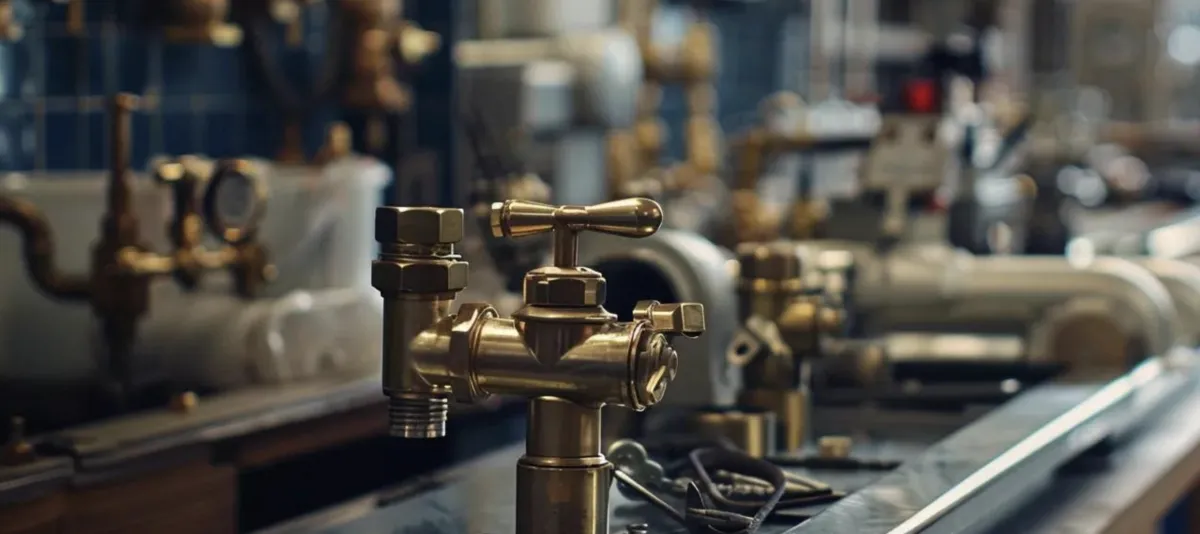
Understanding How to Turn Off Valve for Water FlowPost
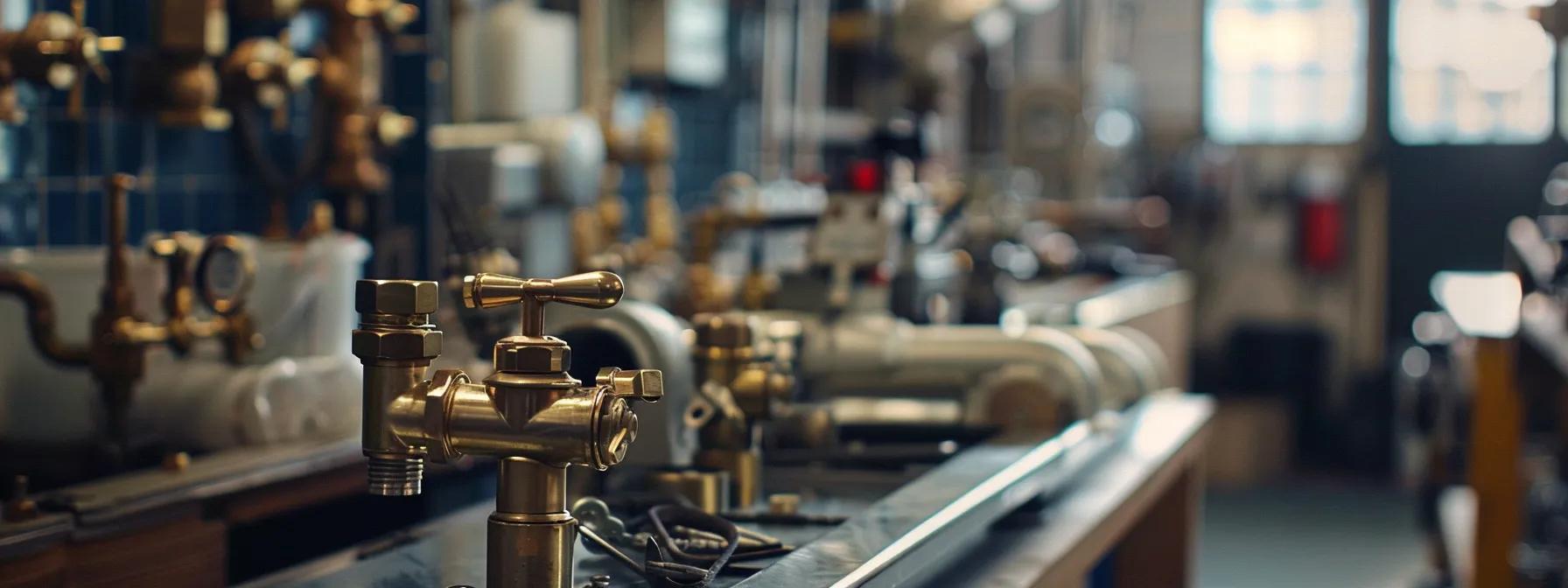
Types of Water Shut-Off Valves
Introduction
Water shut-off valves are essential plumbing fixtures designed to control the flow of water and prevent extensive water damage due to leaks, burst pipes, or other plumbing emergencies. Homeowners in areas such as Highland Texas rely on these valves to quickly turn off the water supply to isolated zones, fixtures, or even the entire house. In both residential and commercial settings, peradventure plumbing recommendations underscore the importance of knowing exactly how to operate various types of valves—whether it’s a simple lever-type valve, an isolation valve for a single fixture, or the main water shut-off valve for the entire property—to protect the structure from severe water damage and reduce costly repairs. This article provides a comprehensive guide on the different types of water shut-off valves available, including ball valves, gate valves, globe valves, fixture shut-off valves, and specialized water shut-off valve varieties such as butterfly valves and check valves. It explains their operation, common materials, and usage scenarios in detail. Homeowners will also benefit from information on the strategic placement of main shut-off valves and practical advice on what to do if a valve cannot be located. Throughout this discussion, terms like water valve on off, turn off the water, isolation valve, and plumbing fixture appear to guide you in selecting and operating the most appropriate valve for your water systems. With insights drawn from reputable studies and peradventure plumbing experiences, this article endeavors to improve your home improvement practices by ensuring efficient water flow control and minimal water damage.
Transitioning to the main content, the following sections detail each valve type, providing practical guidelines and comprehensive operational insights.
Ball Valves for Quick Water Flow Stoppage
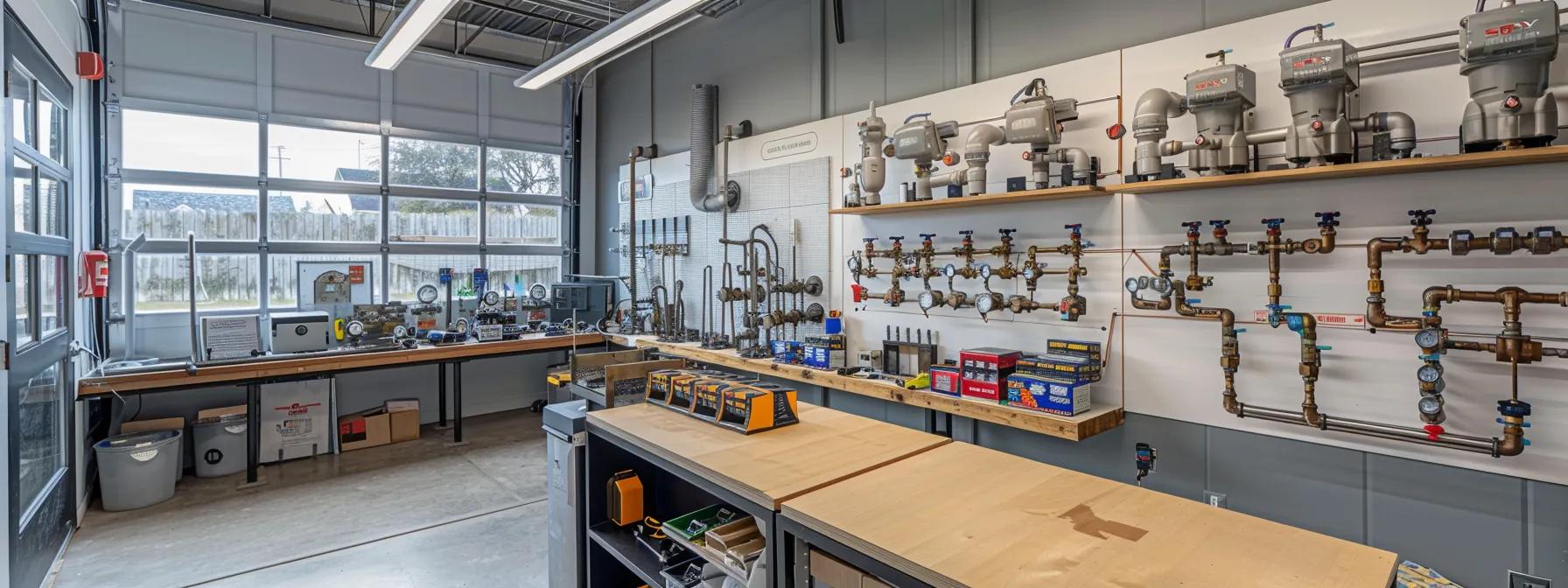
Ball valves operate using a spherical closure element with a hole (known as the “ball”) that aligns with the water flow when open, and rotates perpendicular to the flow to stop it. In their simple design, these valves allow for quick and reliable shut-off of water, making them popular in both main water lines and smaller fixtures. The primary advantage of ball valves is the ease and speed with which they can isolate water supply to any given area, effectively reducing the risk of extensive flooding due to a pipe burst or leak. Their durability and minimal pressure drop make them the preferred choice in both residential and commercial plumbing systems.
Understanding Ball Valve Operation
Ball valves work on a simple rotary mechanism where turning the handle 90 degrees moves the ball inside the valve from an open position (with the internal channel aligned with the pipe) to a closed position (with the channel perpendicular). This design offers a secure shut-off that is less likely to wear out compared to other types of valves, thus ensuring that water flow is turned off completely with minimal effort. The ball’s robust construction, often made of metal or reinforced plastic, provides excellent resistance against corrosion and various water-borne contaminants. Additionally, the ball valve design has fewer moving parts than more complex valves like globe or gate valves, which translates into a longer lifespan and easier maintenance.
Full Port Versus Standard Port Ball Valves
There are two primary types of ball valves: full port and standard port. The full port, or full bore, ball valve features a ball that is the same diameter as the pipe, minimizing water flow restrictions. This makes full port valves ideal for systems where maintaining water pressure and flow rate is critical. In contrast, standard port ball valves have a smaller ball compared to the internal diameter of the pipe, resulting in a slight drop in pressure due to the constricted flow area. However, standard port valves may be more cost-effective for applications that do not require continuous full flow. Homeowners and professionals must consider factors such as water pressure requirements and flow characteristics when choosing between these two variants.
Common Materials for Ball Valves
Ball valves are manufactured from various materials including stainless steel, brass, and PVC. Stainless steel ball valves provide high durability and are resistant to corrosion and extreme temperature variances, making them perfect for outdoor installations or industrial use. Brass ball valves are common in residential plumbing because they offer a balance of strength and affordability while being sufficiently resistant to rust. PVC ball valves, while not as robust as metal counterparts, are lightweight, inexpensive, and resistant to many chemicals, which can be advantageous in certain specialized applications.
Identifying a Ball Type Turn Off Valve for Water
Identifying a ball type turn off valve involves a visual inspection of the valve's handle and operating mechanism. The presence of a lever that rotates 90 degrees typically indicates a ball valve. In many homes, ball valves are installed near the water heater, under the sink, or at strategic points along the main water supply line. Their design, which frequently includes clear markings or color coding, assists homeowners in quickly identifying which valve governs a specific section of the plumbing system. This rapid identification is critical during emergencies, as it helps homeowners immediately stop water flow to prevent further damage.
Applications for Ball Valves in Water Systems
Ball valves serve an array of applications within water systems. They are commonly used as the primary shut-off valves in both residential and commercial water lines due to their reliability and quick operation. Their robust design makes them suitable for high-pressure applications and fixtures such as washing machines, dishwashers, and refrigerators. Additionally, ball valves are effective in isolating sections of a piping system during maintenance or repairs. For example, during a basement leak, a ball valve can be used to stop the water flow to that specific area without affecting the entire house. Their compact design and efficient operation also make ball valves a popular choice in industrial settings where rapid water isolation minimizes production downtime and reduces repair costs.
Overall, ball valves represent a key component in a comprehensive water shut-off strategy where preventing water damage is paramount. Their ease of operation, combined with high performance and durability, makes them indispensable in modern plumbing systems used for everyday home improvement and critical emergency interventions.
Gate Valves for Main Water Line Control
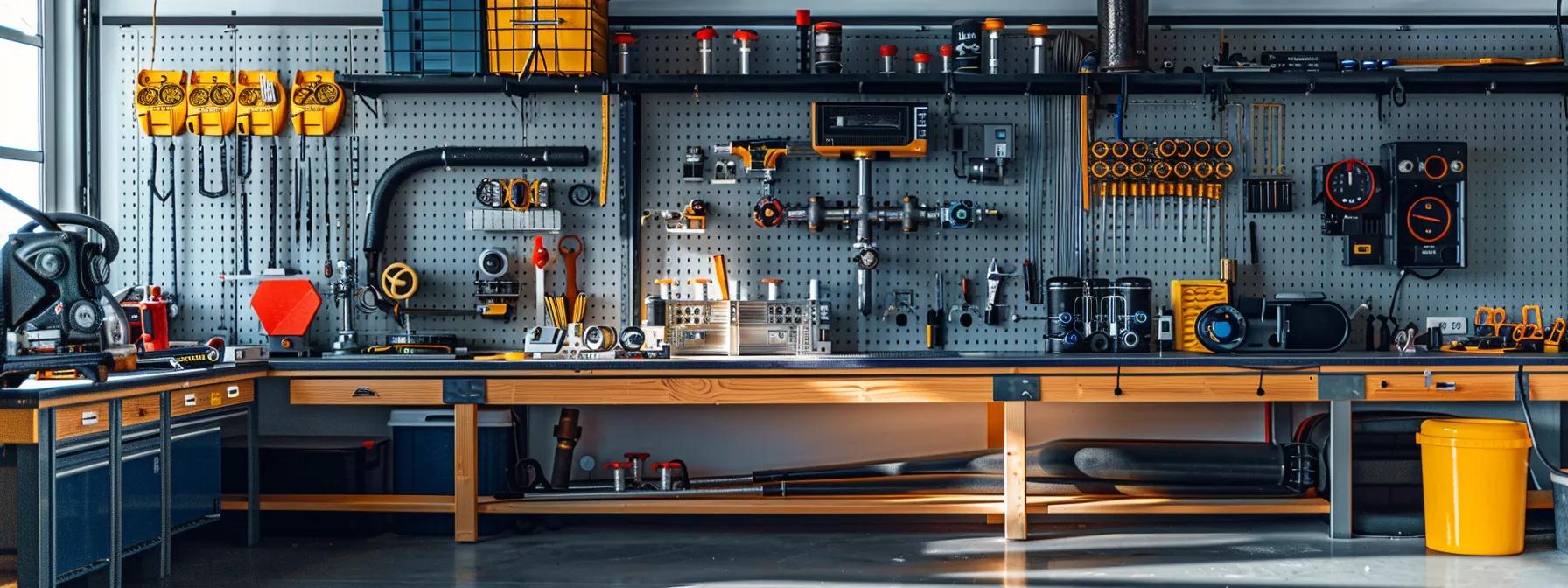
Gate valves are traditionally used to control the main water flow in plumbing systems. Unlike ball valves which rotate, gate valves operate with a sliding gate mechanism that moves up and down to either open or shut the valve completely. When fully open, a gate valve offers minimal resistance to the water flow, allowing nearly unobstructed flow which is particularly beneficial for efficiently supplying water to an entire household. Conversely, when closed, the gate completely seals against the valve seat, thereby stopping the water flow entirely.
How Gate Valves Function to Stop Water
Gate valves function by using a wedge-shaped metal gate that is raised or lowered by a threaded stem. When the gate is lowered, it fits tightly into a seat within the valve body, effectively ceasing water transmission by creating a near-perfect seal. The turning mechanism turns the stem, which in turn moves the gate vertically. This design is simple yet robust, making gate valves durable over long-term usage. While they provide an excellent seal when fully closed, gate valves are not typically designed for throttling or regulating water flow. They are best used in a binary mode: fully open or fully closed. Additionally, the design minimizes wear since the parts only move during the infrequent operations of shutting or opening the valve, which improves the longevity of the valve.
Recognizing a Gate Turn Off Valve for Water
A gate turn off valve can be recognized by its traditional round handle and long threaded stem. Typically, these valves are larger than modern ball valves and are installed in more permanent positions, such as the main water line entering a building. Their construction features a smooth, linear gate and often a conservative aesthetic that aligns with older plumbing systems. Gate valves may exhibit signs of wear such as stem corrosion or difficulty in operation if used frequently or over many decades, so regular inspections are advisable in older installations.
Gate Valve Use in Residential Plumbing
In residential plumbing, gate valves are often located near the main water meter and where the main water line splits off to various parts of the house. They are favored when it is necessary to cut off water to an entire facility, which is why many homeowners are advised to locate their house main water valve. Despite their reliability, gate valves are not ideally suited for frequent operation. In more modern settings, ball valves are sometimes preferred for their quicker operation and reduced maintenance needs. However, for existing plumbing systems, gate valves remain widely deployed due to their cost-effectiveness and robust sealing properties. Homeowners dealing with water damage issues or requiring swift water shut-off during leaks might consider replacing old gate valves with more modern alternatives if continued frequent operation becomes necessary.
Potential Issues With Gate Valves
While gate valves are traditionally robust, they come with several potential issues that plumbers must consider. Over time, sediment and mineral deposits can accumulate around the gate, potentially impairing the valve’s ability to fully close and leading to leaks. Corrosion can also occur on the threaded stem, making it difficult to operate. Additionally, if not maintained properly, the cushioning seat may deteriorate, reducing the effectiveness of the seal and hence allowing water to trickle through even when the valve is supposed to be closed. Given these challenges, homeowners and plumbing professionals are advised to inspect gate valves periodically and consider replacement if signs of wear or corrosion are apparent.
Gate valves continue to play an important role in main water control despite these challenges. Their operation is straightforward, and with proper maintenance, they can provide reliable service for many years. Upgrading from older gate valves to newer models or different valve types is a smart approach for ensuring that your home’s water shut-off mechanism is both efficient and easy to operate, especially in emergencies where every second counts.
Globe Valves for Regulating Water Pressure
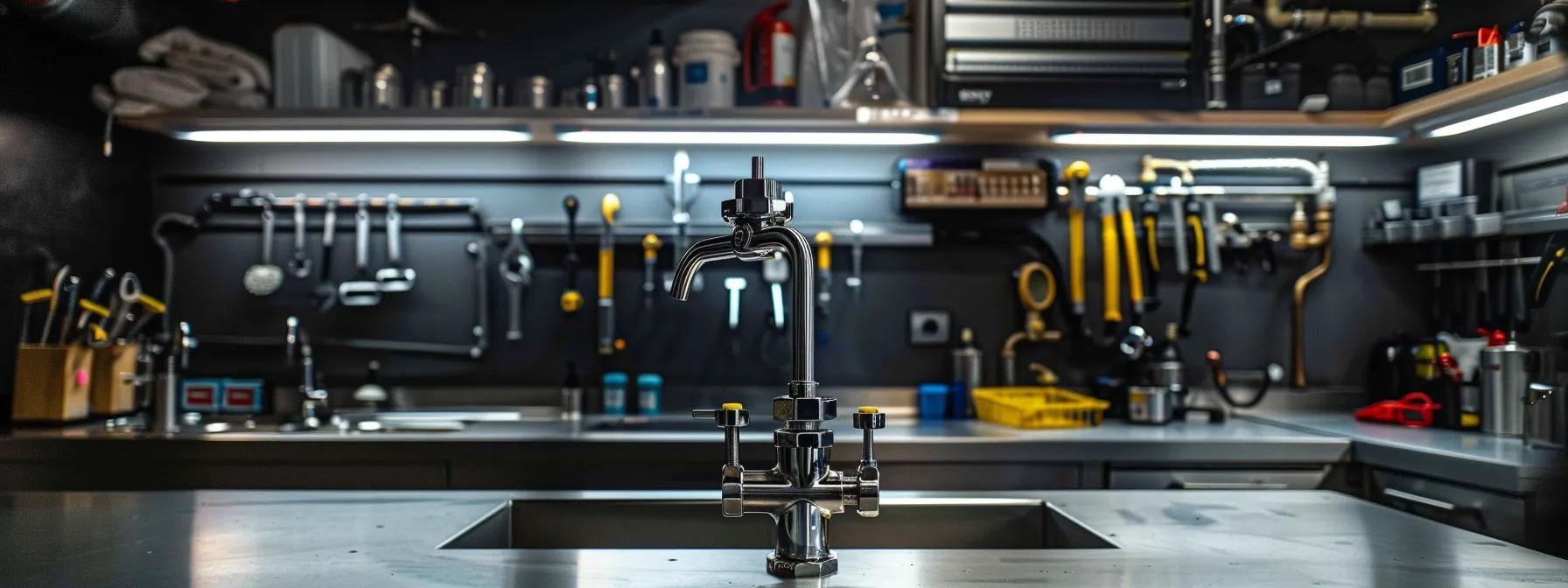
Globe valves are specifically designed to regulate water flow and maintain appropriate pressure levels within piping systems. Unlike ball and gate valves that are intended either to fully open or fully close the water flow, globe valves allow for fine adjustments. By varying the position of the globe valve’s plug, homeowners and plumbers can control the water pressure and thus prevent issues like over-pressurization that might otherwise lead to water damage. Their design features a spherical body with an internal baffle that directs water flow in a controlled manner, making them particularly effective in applications where gradual regulation rather than immediate shut-off is required.
The Mechanics of Globe Valve Water Control
Globe valves operate using a movable plug that is screwed into a stationary ring seat. Adjusting the plug position allows water flow to be throttled precisely, making the globe valve ideal for regulating water pressure in sensitive systems. This action is particularly useful in the bathroom, kitchen, and for appliances such as dishwashers and washing machines that require precise water flow control. Because globe valves are designed to be used in a sliding or rotary motion, their internal parts experience more friction than those in ball or gate valves; however, this friction is offset by the valve’s ability to modulate flow. Engineers design globe valves carefully to ensure that despite the increased resistance, smooth operation is maintained. Their construction typically involves materials such as brass or stainless steel, which offer resilience against corrosion, ensuring that the fine control they offer is preserved over long periods.
Distinguishing Globe Valves From Other Types
The distinguishing factor of a globe valve, compared to other water shut-off valves, lies in its ability to partially obstruct the water flow, allowing variable control. While ball valves use a full-bore mechanism and gate valves use a sliding gate, globe valves use a plug that can be adjusted to near any position between fully open and fully closed. This capability is particularly useful in systems requiring gradual pressure adjustment, as it can accommodate changes in water pressure without the abrupt response associated with binary valve designs. Additionally, their internal design with a fixed seat and movable plug makes them structurally distinct from the other valves, as the swirling flow pattern is necessary for evenly distributing water pressure across the system.
Typical Uses for Globe Style Turn Off Valve for Water
Globe valves are widely used in scenarios where continuous control over water flow is desired. They are commonly installed in heating and cooling systems, where maintaining a consistent temperature is crucial and small adjustments in water flow can significantly impact system performance. Additionally, in kitchens and bathrooms, globe valves help regulate flow to appliances, preventing sudden surges in water that could cause damage or inefficiency. Their precise control also makes them suitable for industrial applications where critical water pressure management is required, ensuring that high-value equipment operates within safe parameters.
Advantages of Using Globe Valves
One significant advantage of globe valves is their ability to precisely control water flow, which helps conserve water and maintain system stability. This precision prevents the kind of water waste that can occur when water flows at an uncontrolled rate. The adjustable plug also means that homeowners can use the valve to quickly dial in the optimal pressure setting for specific fixtures or appliances, enhancing overall efficiency in plumbing systems. Moreover, because globe valves enable variable control rather than a simple binary state, they reduce the risk of water damage caused by sudden pressure changes, which might otherwise damage pipes and lead to significant repair costs.
In summary, globe valves offer both pressure regulation and water flow control, making them invaluable in modern plumbing systems where precision is key. Their operation differs markedly from the rapid shut-off methods seen in ball and gate valves, and they provide a unique blend of functionality suited to applications that require continuous adjustment. By carefully considering the context of use, such as in bathroom fixtures or major water supply lines, homeowners can decide whether a globe valve is the optimal solution for managing water pressure effectively across their home.
Valve TypeControl MechanismIdeal ApplicationCommon MaterialsKey BenefitBall ValveRotating ball closureQuick, full shut-off for water linesStainless steel, brass, PVCFast, reliable shut-offGate ValveSliding gate mechanismMain water line shutdownBrass, cast ironMinimal flow resistance when fully openGlobe ValveAdjustable plug for throttlingRegulating water pressure in fixtures and systemsBrass, stainless steelPrecise flow control and pressure regulationFixture ValveSmall, dedicated to fixturesIsolating individual appliancesPlastic, brassQuick, localized shut-offButterfly ValveRotating disc mechanismAutomated and larger volume systemsStainless steel, PVCAutomated control, space saving
The table above summarizes the key characteristics of various water valves. Before proceeding further, it's important to recognize that each valve type brings its own strengths and weaknesses to different applications. The table provides a quick reference for comparing them based on their control mechanisms, common materials, and the benefits they offer to homeowners and plumbing professionals alike.
Fixture Shut-Off Valves for Isolating Appliances and Fixtures

Fixture shut-off valves are designed to isolate individual appliances and fixtures rather than controlling large water supply sections. These valves are typically found on water lines connected to sinks, toilets, bathtubs, and refrigerators. The primary advantage of these valves is that they allow for repairs or replacements to be conducted on a single fixture without disrupting the entire household water supply. This localized control minimizes inconvenience and helps prevent water damage to unaffected areas by allowing precise turn off of problematic fixtures while remaining connected to the main water supply.
Angled Fixture Shut-Off Valve Applications
Angled fixture shut-off valves, often mounted under sinks or behind appliances, provide a space-saving solution that is easy to access during routine maintenance. Their angled design ensures that even in tight spaces, there is sufficient clearance to operate the valve handle. Such valves are commonly used in bathrooms and kitchens where cabinets or countertops limit accessibility. The ability to quickly isolate a fixture using an angled valve improves safety during repair jobs—minimizing water leakage when performing work under a sink or when disconnecting a dishwasher. Moreover, these valves tend to be more durable due to their secure mounting and are engineered to withstand frequent operation without compromising their sealing capacity.
Straight Fixture Shut-Off Valve Uses
Straight fixture shut-off valves are favored for their simplicity and direct connection to the piping system. Unlike the angled variants, straight valves are installed directly in line with the pipe, offering a cleaner aesthetic and a straightforward operational mechanism. These valves are typically used in open spaces where access is not restricted by structural obstacles. Their design allows for easy integration and maintenance, as their straightforward configuration often makes it simple to assess and repair any issues. In addition, straight fixture valves are widely used in older construction where the existing plumbing does not accommodate angled fittings. Their unobtrusive design ensures that water can be turned off with minimal impact on the overall plumbing layout.
How Fixture Valves Connect to Pipes
Fixture shut-off valves connect directly to the main water supply lines through threaded or compression fittings. A critical aspect of these connections is ensuring a leak-proof join, frequently achieved via soldered or crimped connections when dealing with copper pipes, or via secure compression fittings when dealing with plastic or PEX pipes. The installation procedure for these valves typically involves verifying that the pipe diameter matches the valve specification to ensure optimal performance. Proper installation is crucial to prevent water damage due to leaks behind walls or under sinks. Many modern fixture valves also incorporate materials such as brass or stainless steel to enhance durability and reduce the risk of corrosion over time. For many homeowners, replacing these valves with newer models can significantly improve control during plumbing repairs and reduce water damage risks.
Locating Fixture Turn Off Valves for Water
Locating the fixture turn off valves in your home is a straightforward process but is critical during emergencies. These valves are generally found in concealed areas like under sinks, behind toilets, or within access panels near appliances. Homeowners should ensure that these valves are well labeled and that the shut-off mechanism is regularly tested for functionality. Regular inspections and routine maintenance can prevent unwelcome surprises during plumbing repairs or emergency situations. If a fixture valve is not functioning properly, immediate repair or replacement is necessary to avoid water damage resulting from a leak. By understanding the locations and operating principles of fixture shut-off valves, homeowners can enhance their readiness for plumbing emergencies and minimize potential water damage.
Fixture shut-off valves provide a localized control mechanism that significantly contributes to the overall safety and efficiency of a plumbing system. When combined with the main water shut-off mechanisms, these valves ensure that any isolated issue, such as a faulty dishwasher or a leaking toilet, does not compromise the entire water supply system. For homeowners, this dual approach enhances control over water flow, allowing for partial, rather than complete, shutdowns during maintenance or emergencies.
Specialized Water Shut-Off Valve Varieties
Specialized water shut-off valves address unique needs that go beyond simple on/off functionality. These include butterfly valves, check valves, stop-and-waste valves, pressure-reducing valves, and electric shut-off valves. Each of these specialized valves offers distinct benefits in terms of water management, system automation, and enhanced safety—capabilities that are especially valuable in high-demand environments or complex water distribution systems.
Butterfly Valves and Their Disc Mechanism
Butterfly valves operate using a circular disc that rotates within the closed conduit. The disc moves to either block or allow water flow, offering a compact and efficient solution for automated water flow control. These valves are particularly valuable in larger water systems and industrial applications, where space constraints preclude the use of larger valves. The disc mechanism ensures that, when closed, the valve provides an effective seal, and when open, it causes minimal pressure drop. Butterfly valves are popular in cooling systems and other reverse flow applications, as they can be integrated with automated control systems to optimize water usage. Their design facilitates quick operation and allows for precise modulation of water flow, which is especially beneficial in systems where water pressure needs to be carefully regulated.
Check Valves for Preventing Water Backflow
Check valves are indispensable in preventing water from flowing backward within a plumbing system—a phenomenon that can lead to contamination and significant water damage. These valves are designed to automatically allow water to flow in only one direction. When water attempts to reverse direction, the valve's internal mechanism, often a spring-loaded disc, closes tightly, ensuring that backflow is prevented. This functionality is crucial for systems prone to water hammer or in scenarios where water contamination is a risk. In many residential and commercial applications, check valves are installed near the water heater or at other pivotal points where reverse flow could compromise the system's integrity. Their reliability in monitoring water flow direction makes them a critical component of any modern plumbing system.
Stop-and-Waste Valves for Draining Pipes
Stop-and-waste valves combine the functions of controlling water flow and allowing water to be drained from the system. These specialized valves are particularly useful in environments where pipes must be drained after use, such as in irrigation systems or areas prone to freezing. By opening the waste port along with shutting off the main supply, these valves help to remove residual water from the system, reducing the risk of damage due to freeze-induced expansion. Their design typically includes an additional drain connection that enables controlled release of water. This efficiency in draining pipes also helps in maintenance, making it simpler to flush out debris and sediments from the system, thereby prolonging the life of the plumbing infrastructure.
Pressure-Reducing Valves for System Protection
Pressure-reducing valves (PRVs) are engineered to regulate the pressure within a water system, protecting the infrastructure from high-pressure surges. These valves work by automatically reducing the incoming water pressure to a predetermined, safe level, thereby preventing stress and potential damage to pipes, fixtures, and appliances. In areas where the municipal water supply is high in pressure, PRVs are imperatively installed to avoid issues such as pipe rupture or extensive water damage during normal operations. The precise control offered by these valves ensures a steady, controlled water flow, optimizing both energy efficiency and operational safety. With advantageous use in residential settings, these valves provide homeowners peace of mind by significantly reducing the likelihood of water-related malfunctions or damage.
Electric Shut-Off Valves for Automated Control
Electric shut-off valves represent the forefront of automated water control technology. They are integrated with home automation systems and can be controlled remotely via smartphones or home management panels. These valves are particularly useful for emergencies or for scheduled maintenance operations, allowing homeowners to turn off the water supply at predefined times without physical intervention. An electric shut-off valve employs an electric motor to turn the valve, providing the same reliable shut-off as manual valves but with added convenience and integration with modern smart home systems. Their ease of use, coupled with the ability to monitor and control water flow remotely, ensures that in cases of severe water damage risk or prolonged absence from the home, the system can be safely deactivated. This technology not only improves water management efficiency but also considerably enhances home security and protection from water damage.
Overall, specialized water shut-off valves cater to specific scenarios where standard valves may not offer the best solution. Their specialized functions, whether for automated operation, preventing backflow, or reducing pressure, significantly contribute to a resilient and adaptable plumbing system. Homeowners and plumbing professionals should consider these valves as part of a comprehensive water management strategy, ensuring optimal performance and protection against potential water-related emergencies.
Identifying and Locating Your Main Turn Off Valve for Water
Identifying and locating the main turn off valve for water is a crucial element of effective plumbing maintenance and emergency response. Knowing the exact location of your house main water valve can drastically reduce the extent of water damage in situations of leaks, pipe bursts, or during routine maintenance operations. Typically installed near the water meter, in the basement, or close to where the water supply enters the home, the main shut-off valve is designed to cut off water supply to the entire property quickly. The effectiveness of a plumbing emergency response depends on how readily accessible and understandable this valve is.
Common Indoor Locations for Main Shut-Offs
Inside the home, the main water shut-off valves are frequently located in utility rooms, basements, garages, or under kitchen sinks. In many homes, this valve is clearly labeled on the water meter or the pipe where the main water line enters the building. Homeowners are encouraged to know these locations well and to test the valve periodically to ensure that it works in an emergency. Often, there may be multiple shut-off points, such as those for individual fixtures versus the main shut-off. The main shut-off valve for the entire house is typically larger and positioned in a more accessible location where it can control the overall water supply. Ensuring that this valve is easily accessible can prevent catastrophic water damage during events such as a burst pipe.
Finding Outdoor Main Water Shut-Off Valves
Outdoor water shut-off valves are generally used to control the water supply entering a building from the municipal line. These valves are often found near the street, attached to an exterior wall, or in a meter box. Municipal regulations sometimes require these valves to be buried underground with clear signage above ground. If the valve is located outdoors, remain cautious during winter months, as freezing temperatures can impair valve functionality. Homeowners should ensure that their outdoor valves are clear from any debris or landscaping obstructions and that any access panels remain operable. Regular inspection of these outdoor shut-off valves minimizes the chance of them failing when needed most.
Using Your Property Inspection Report to Find Valves
During a property inspection, professional inspectors typically document the locations of all key plumbing shut-offs, including the main water valve. Homebuyers and homeowners should review this report to ensure that they are aware of the exact placements of both indoor and outdoor shut-off valves. This practice not only aids in immediate emergency response but also assists in planning any plumbing renovations or repairs. By cross-referencing the inspection report with your personal knowledge of the home, you can ensure there are no blind spots where water damage might occur unnoticed. This documentation is especially useful in larger properties where the main water shut-off valve might not be immediately apparent.
What to Do if You Cannot Locate Your Valve
If homeowners cannot locate the main turn off valve, it is advisable to consult a professional plumber. In the event of an emergency, delaying the shut-off can result in extensive water damage, leading to costly repairs. Alternatively, some properties may have an emergency cut-off button located near the water meter. In such cases, regular maintenance and professional consultation can help clarify any ambiguities regarding the valve’s location. Homeowners should also consider installing supplementary sensors or smart home monitoring systems that alert them when the water flow is abnormal, further assisting in pinpointing the valve location during emergencies.
Differentiating Main Shut-Offs From Fixture Valves
It is important to differentiate between the main shut-off valve and various fixture shut-off valves scattered throughout the home. The main shut-off valve controls the entire water supply, whereas fixture valves are designed for individual appliances or areas, such as sinks and toilets. Understanding the difference is key during plumbing emergencies—if you need to stop water coming into the entire house due to a burst pipe in the basement, you must locate and operate the main shut-off valve, not the individual fixture valves. Clear labeling and documentation of these valves are recommended to prevent operational confusion during critical moments.
For effective management and emergency prevention, homeowners should familiarize themselves with the exact locations of both indoor and outdoor main shut-off valves. This preparedness ensures that in any plumbing crisis, water flow can be quickly contained, potentially saving the home from significant water damage and reducing repair costs.
Frequently Asked Questions
Q: What is the most reliable type of water shut-off valve for home use? A: Ball valves are generally considered the most reliable due to their quick operation and durable design. Their simple mechanism ensures a complete shut-off with minimal wear over time. However, depending on the application, gateway or globe valves might be preferred for precise water flow control or main water line isolation.
Q: How can I quickly locate my house’s main water shut-off valve? A: Main water shut-off valves are typically located near the water meter or where the water line enters the home, such as in basements, garages, or utility rooms. Reviewing your property inspection report can also help pinpoint their precise location.
Q: Are specialized valves like check valves better for preventing water damage? A: Check valves are excellent for preventing backflow, thereby reducing the risk of contamination and water damage. Their automatic operation ensures that water only flows in one direction, which is crucial in systems where reversing pressure could lead to significant issues.
Q: What maintenance should be performed on water shut-off valves? A: It is recommended to operate the valves periodically to ensure smooth function, inspect them for signs of corrosion or wear, and replace any components that show degradation. Regular maintenance can prevent unexpected failures and minimize water damage during emergencies.
Q: Can I upgrade an old gate valve to a modern ball valve system? A: Yes, upgrading to modern ball valves can provide faster, more reliable shut-off along with improved durability. Consultation with a professional plumber will ensure that the change is compatible with your existing plumbing system for optimal performance.
Conclusion
Water shut-off valves are a critical component of any plumbing system, ensuring that homeowners can manage water flow effectively to prevent damage during leaks, bursts, or maintenance activities. This article has detailed the operation, advantages, and common applications of various valve types—from ball valves, known for their quick and reliable shut-off, to specialized valves such as pressure-reducing and electric shut-off models designed for precise water flow control. By understanding where valves are located, including main shut-offs and fixture valves, homeowners can take quick action during an emergency and reduce the chance of extensive water damage.
With detailed insights into each valve type, along with practical advice on locating, maintaining, and upgrading these crucial fixtures, homeowners are better equipped to protect their properties under any circumstance. Home improvement and water damage prevention are significantly enhanced by having a clear understanding of your plumbing system’s shut-off mechanisms. Contact a professional plumbing service in the Highland Texas area for expert advice, maintenance, or upgrades to ensure your water system remains safe and effective.